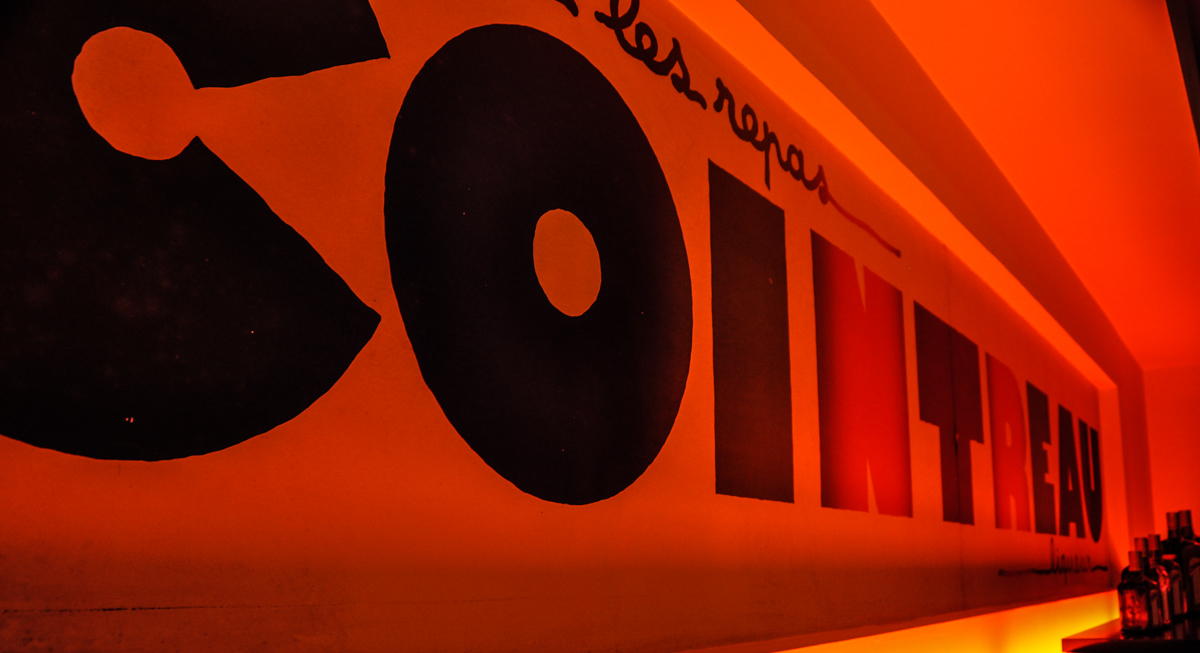Wuhhu, it’s Friday and maybe you’re heading out for a dinner or drinks with some friends. In that case, chances are, that you’ll meet a Frenchman in a bar. He’ll tell you to be “Cointreauversial”, that he goes well with others but is intense enough company in himself. He will dare you to put him on ice and when you put him to your lips, he tastes like oranges.
His name is Cointreau. No, not [kontrø] – [kwan-troh]!
So, you already learned something new; how this popular liqueur is actually pronounced. We learned this when we visited Carré Cointreau – the factory / museum / showroom that makes, tells and shows everything worth knowing about this French liqueur with its 167 year old roots in Angers, France.

A bit of history to show off in the bar
Let us tell you a little bit of history about the orange liqueur, they put in your Cosmopolitan or Sidecar. Maybe you can show of your international knowledge to the one you’re sharing a nightcap with.
Story goes, they weren’t even spirit manufacturers to begin with. They were two brothers needing decent fruit liqueur for their confectionary, so they started doing it themselves in 1849. It became a great success, but it wasn’t until 1875 that the son, Edouard Cointreau invented “a crystal-clear liqueur made from a perfect blend of sweet and bitter orange peels”.
And the rest is history. A well documented history! Cointreau were among the first to produce a cinema commercial only three years after the Lumière brothers showed their movies to the public in 1896. and have since then pioneered in cinema commercials and marketing in general. This is probably why Cointreau is so heavily reproduced, that their museum can display 200 fake bottles. “We have 800 others in storage”, the guide tells us.
- Cointreau is so heavily reproduced, that their museum can display 200 fake bottles
- Edouard Cointreau invented in 1875 “a crystal-clear liqueur made from a perfect blend of sweet and bitter orange peels”
- Cointreau were among the first to produce a cinema commercial only three years after the Lumière brothers showed their movies to the public in 1896
- A little bit of history about the orange liqueur, they put in your Cosmopolitan or Sidecar
- Cointreau are pioneers in cinema commercials and marketing in general
Some details to impress the barman
Alright, we can’t tell you the recipe – even today it’s kept a secret. Maybe it’s the high-quality sweet and bitter orange peels from various regions of the world. Maybe it’s the combination of the use of both dried and fresh peels macerated for weeks in alcohol to reveal their special aroma. Or maybe it’s the antique copper stills being used, several of which are from the century before last and have endured the move from the original distillery in the heart of Angers.
Did you know, that when Cointreau is cooled to a certain temperature – like when mixed with ice – it turns opalescent. This is because the essential oils solidify.
- Carré Cointreau – the factory / museum / showroom that makes, tells and shows everything worth knowing about this French liqueur with its 167 year old roots in Angers, France
- The dried and fresh orange peels macerated for weeks in alcohol to reveal their special aroma
- Some of the antique copper stills being used have endured the move from the original distillery in the heart of Angers
- The museum displays 200 fake bottles. “We have 800 others in storage”, the guide tells us
- Maybe Cointreau’s secret is the antique copper stills being used, several of which are from the century before last
Some drink recipes
Well, you can’t make a decent article about a liqueur without suggesting a couple of recipes, right? Straight from Cointreau themselves.
- Cointreau Bubbles
- Cointreau Red Bubbles
- Cointreau Clip
- Margarita
- Cointreau Cocktails
- Cointreau Fizz
- CointreauPolitan
- Delicious recipes straight from Cointreau themselves
If you’re visiting the northern part of France, you might want to visit Mont Saint-Michel, check out our Guide to 2-4 hours in Le Mans or dream about Paris in a houseboat.
Enjoy. And cheers!
Learn more




















